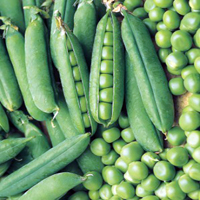Influence of phosphorus nutrition on seed yield and quality of pea (Pisum sativum L.) cultivars across different seasons

Accepted: 19 August 2019
HTML: 39
All claims expressed in this article are solely those of the authors and do not necessarily represent those of their affiliated organizations, or those of the publisher, the editors and the reviewers. Any product that may be evaluated in this article or claim that may be made by its manufacturer is not guaranteed or endorsed by the publisher.
Due to the rapid shrinking of supply of mineral nutrients as well as observed weather fluctuations in throughout Europe in recent ten years, sustainable phosphorus fertilisation has become an important aspect of legume cultivation. There is a lack of knowledge about the effect of phosphorus (P) nutrition on the pea seed yield and quality in water poor conditions. This study was conducted to evaluate the seed yield and seed chemical composition of selected pea cultivars in response to the level of P fertilisation and weather conditions across three consecutive years. Redundancy analysis (RDA) was used to assess the proportion of variability of tested variables (seed quality traits) that could be explained by explanatory variables (year, cultivar, fertilisation). Temporary soil drought during flowering stage resulted in a significant increase in yield only after high level of phosphorus application (140 kg ha–1). This indicates that phosphorus significantly mitigated the effect of water shortage. In a dry year, pea had high concentration of fat and fibre in seeds, while in very humid year the opposite response was observed. RDA analysis proved that year effect explained over 50% variability, whereas cultivar and P fertilisation explained only 14.2% of variability. The effect of P fertilisation was only marginal (1.6%) in comparison with cultivar selection (12.6%). Interaction of pea cultivars with fertilisation shows a consistent tendency towards increase of crude protein under higher phosphorus doses for cultivars ‘Tarchalska’ and ‘Protecta’ whereas opposite tendency was observed for ‘Batuta’ and ‘Tinker’. It can be concluded that suitable cultivar selection gives a much greater opportunity to affect pea chemical composition than P fertilisation.
How to Cite
PAGEPress has chosen to apply the Creative Commons Attribution NonCommercial 4.0 International License (CC BY-NC 4.0) to all manuscripts to be published.

 https://doi.org/10.4081/ija.2019.1411
https://doi.org/10.4081/ija.2019.1411







